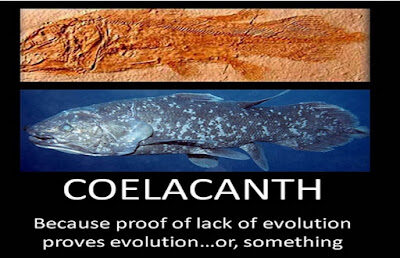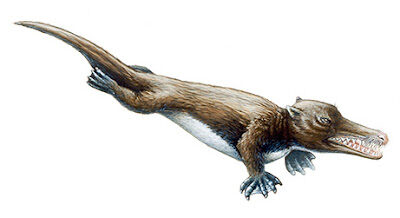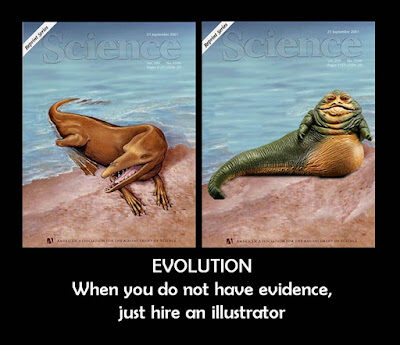Herein I will review National Geographic News’ article PHOTOS: 7 Major “Missing Links” Since Darwin.
TIKTAALIK
The first of the “Major “Missing Links” Since Darwin” which is amongst the “most important fossils that show evolution in action” is “Tiktaalik: The ‘Fishapod.’”

Illustration by Zina Deretsky: National Science Foundation
We are told that it “not only gills and scales but traits of a tetrapod (four-legged land animal), including limblike fins, ribs, a flexible neck, and a croc-shaped head” and “is seen as evidence of the period when our aquatic ancestors began moving ashore” I added emphasis so as to emphasize the weasel words.
Well, we have heard it all before when it was stated of the coelacanth—see Coelacanth – The Hopeless Monster, “Living fossil” Coelacanth – from evidence to tall tale (or is it tall “tail”?) and VIDEO: Living fossil coelacanth: to evolve or not to evolve?
Coelacanths were even depicted with its fins forced downward so that they would appear as legs (or leg-like or proto-legs or what have you) but then they were found alive and well swimming around—and not walking.
Well, Tiktaalik fails since in a Polish quarry footprints have been found of another supposed walking fish and it is claimed to date form 18 million years prior to Tiktaalik.
ARCHAEOPTERYX
Next up it “Archaeopteryx: The First Bird” which “bear impressions of flight feathers on their limbs and tails” and is supposed to “link major species groups—in this case, dinosaurs and birds.”
Oh look, the drawings are placed in an order so it must be true!
The issue is that the first fossil found, which was in 1861 AD, was not complete and did not have a bony sternum which is indicative of a bird. Thus, it was presumed to be an in between. However, all indications subsequently showed that it is just a bird, perhaps with some unique and now extinct features, but a bird nevertheless.
See Atheism and Archaeopteryx and especially Alan Feduccia scientific orthodoxy, censorship and feathered dinosaurs.
AMPHISTIUM
Well, having been told of the Fishapod, we are now told of “Amphistium: The Halfway Flatfish”—note, not the half fish but the halfway flatfish in particular.

Photograph of modern-flatfish courtesy University of Chicago Medical Center
The fossil “flatfish’s eyes are not quite on opposite sides of its body but not quite in their modern asymmetrical arrangement, both on one side of the body.”
This actually has to do with the definition of “evolution” which is not provided in the article which means that anything can be said to count as evidence of it which is the case when the term is generically defined as any and all biological changes through all of history. Yet, I go with a definition which goes back to Darwin and define it as the origin of species from other already previously existing species (with “species” being another term that must be defined).
Thus, in this case a fish is a fish which is only undergoing slight modification from having two eyes on opposite sides to two eyes on the same side: still a fish and still specifically a flatfish.
The article further comments that there was a “lack of transitional flatfish fossils—showing the eyes slowly ‘migrating’ over generations” so that is all at issue and not how a non-fish because a fish and a fish became a non-fish.
AMBULOCETUS
Next is “Ambulocetus: The Walking Whale” refers to a fossil which, note the weasel word “suggests it was able to walk on four legs—on land and in the water.”
This is supposed to be evidence for “the leap from land mammals to whales” and these “fossils trace whales to a doglike predecessor of hoofed plant-eaters, and genetic analysis has identified hippos as whales’ closest living relatives.”
Ambulocetus is so much play-doh in the hands of imaginative evolutionists, consider the following manners in which it has been depicted along with Pakicetus:
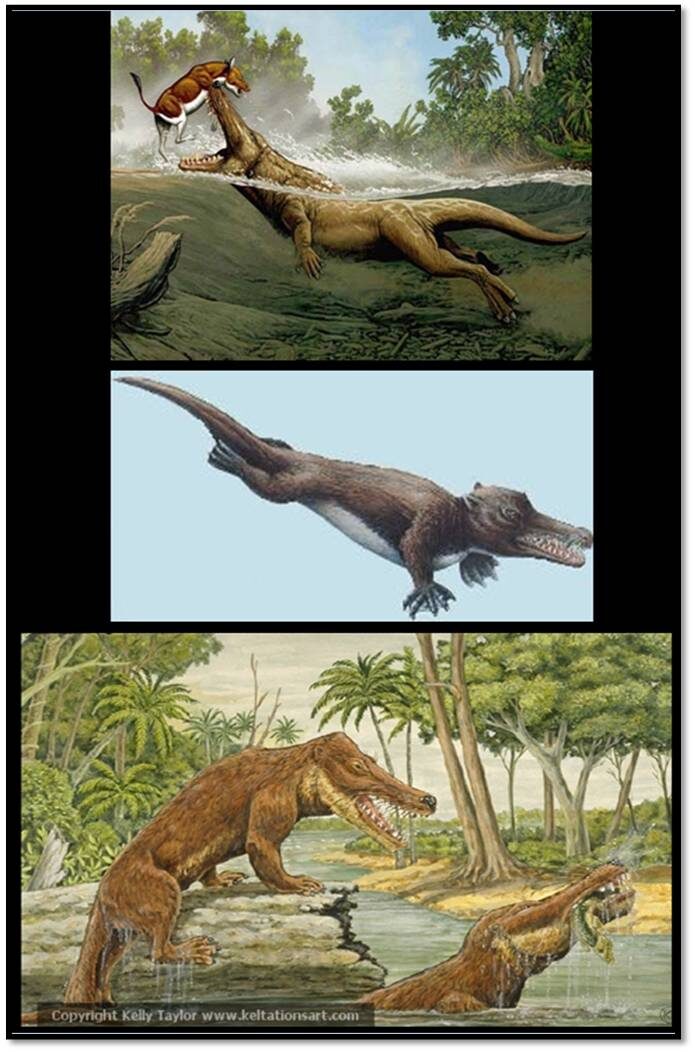

To fur or not to fur, that is the question.
The BBC reported, “Ambulocetus looked like a furry crocodile or a giant otter, it was actually an early whale.” Furry crocodile, giant otter, “early” whale—whatever you want: just draw it, sculpt it, paint it, mold it shape it until it fits your preferred theory. It walks, it swims, it slices, it dices!
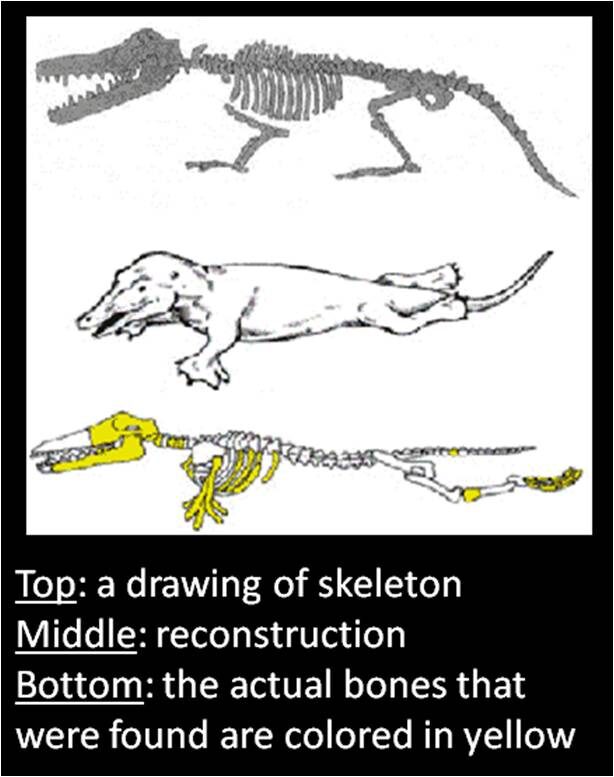
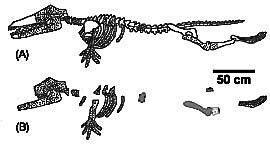
Here is a video that deals with such issues:
HOMO ERGASTER
We are then told of “Homo Ergaster: The “Turkana Boy” Species” note that it is said to be a “species” and we are told which species it is as it was “a small-brained but tall human species with body proportions similar to our own” which would make a normal person, not an evolutionist, conclude that it is a good ol’ fashioned human—period. The boy’s young age height was circa 5¼ ft. and brain would have been circa 880cc.
Now, we are told that it is of the “human species” but that “the species is often called simply Turkana Boy” due to “a child found in 1984 near Lake Turkana, Kenya” (aka Nariokotome Boy). But why not call “the species” simply human—or Homo? Well, no grant, fame and fortune seeking scientists wants to announce that they found a dead human.
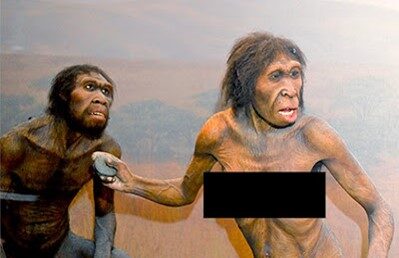 Photograph by Kike Calvo: AP Images
Photograph by Kike Calvo: AP Images
Looks like Turkana Boy got a girlfriend
Of course, the comment is that with finds such as these, “the human family tree has grown rich with fossil evidence of species linking us to ancient apes” yes, even though this is a representative of the “human species”—go figure.
HYRACOTHERIUM/EOHIPPUS
We now come to “Hyracotherium/Eohippus: The Dawn Horse” which is said to be a “foxlike horse” hey, maybe it is a horselike fox.
This section merely asserts that this represented, “depicting the evolution of horses” and then refers to Eoraptor “the small transitional dinosaur” which I would imagine was a misplaced statement within this section. Thus, they just say “foxlike horse” and that is it.
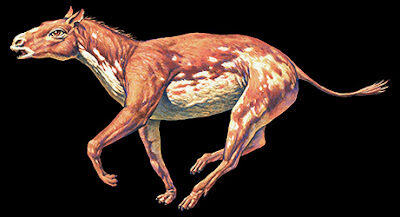
Illustration by Joe Tucciarone
This fossil’s finder, paleontologists Richard Owen, asserted no connection to horses and thought was modern-day hyrax-like (such as a rock badger or coney). I know, I know but, but, but the artist they hired to illustrate something no one has ever seen made it look like a horse and stuff! Indeed, that is why the artist is the evolutionists’ best friend.
THRINAXODON
Finally, we come to “Thrinaxodon: The Emerging Mammal” which is an “archaic proto-mammal…An almost perfect intermediate between mammals and reptiles.”
You calling me half reptile?!?!?
We are told that it “Descended from a reptile group” and “was a cat-size burrower that had scales and laid eggs. But, like mammals, it had whiskers, warm blood, and, scientist suspect, a fur coat” so, basically, lays eggs, has fur, etc. like the modern day platypus.
The Natural History Museum in London’s paleontologist Paul Barrett stated, “Thrinaxodon shows mammal-like features beginning to kick in” to then the platypus is slooooooooooowly evolving from a reptile.
Well overall, National Geographic needs to work on its definition of “evolution” and needs to state it when they write on the subject and the “Major” or minor for that reason “‘Missing Links’ Since Darwin” are still missing.
~~~~~~~~~~~~~~~~~~~~~~~~
A plea: I have to pay for server usage and have made all content on this website free and always will. I support my family on one income and do research, writing, videos, etc. as a hobby. If you can even spare $1.00 as a donation, please do so: it may not seem like much but if each person reading this would do so, even every now and then, it would add up and really, really help. Here is my donate/paypal page.
Due to robo-spaming, I had to close the comment sections. However, you can comment on my Facebook page and/or on my Google+ page. You can also use the “Share / Save” button below this post.

